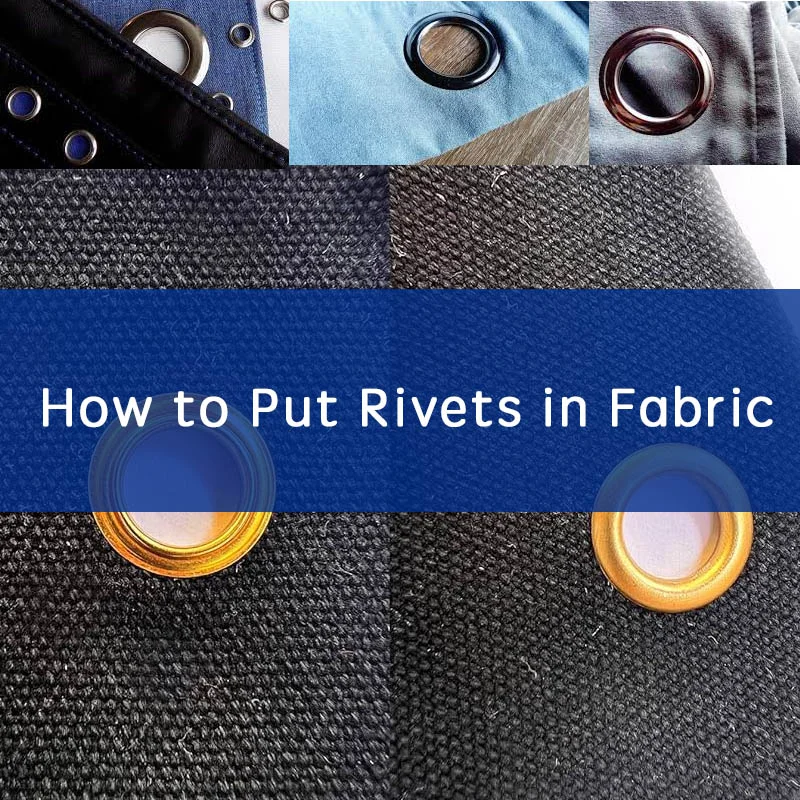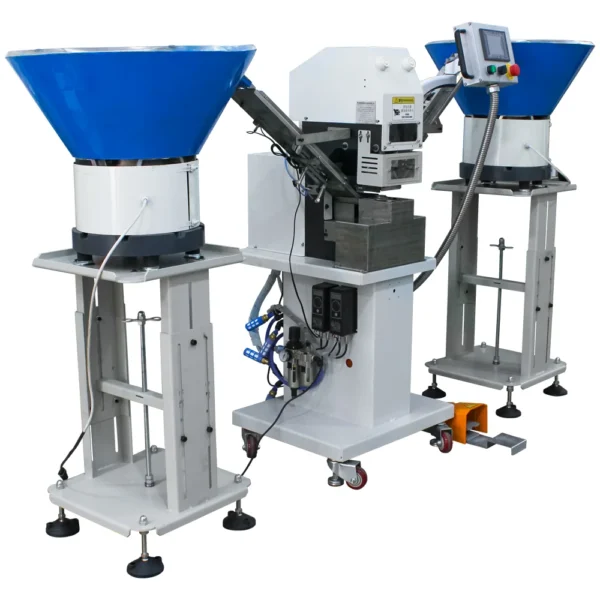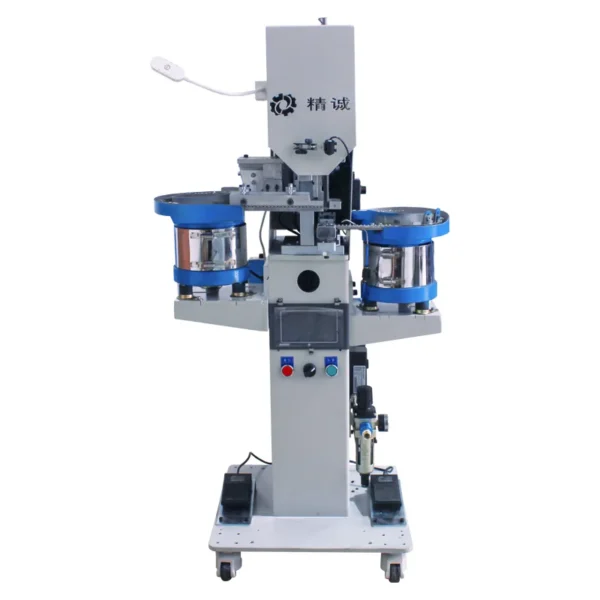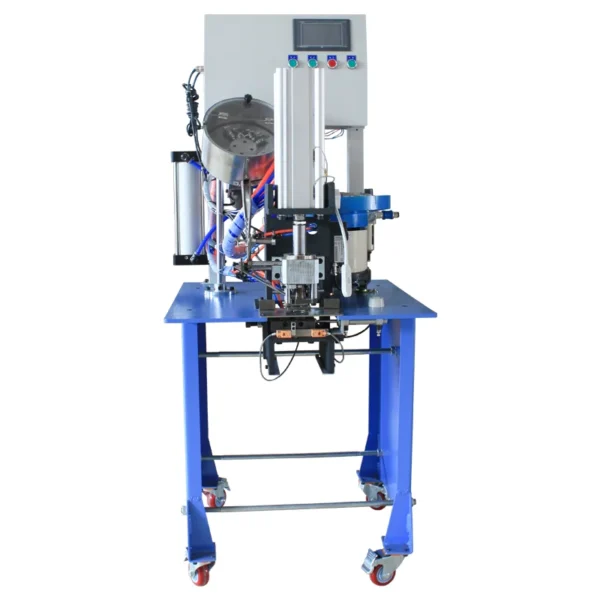Rivets are a versatile and durable fastening option widely, used in fashion and accessories for home décor and crafting projects. How to Put Rivets in Fabric, and Their ability to create strong, lasting bonds.
What is Rivets?
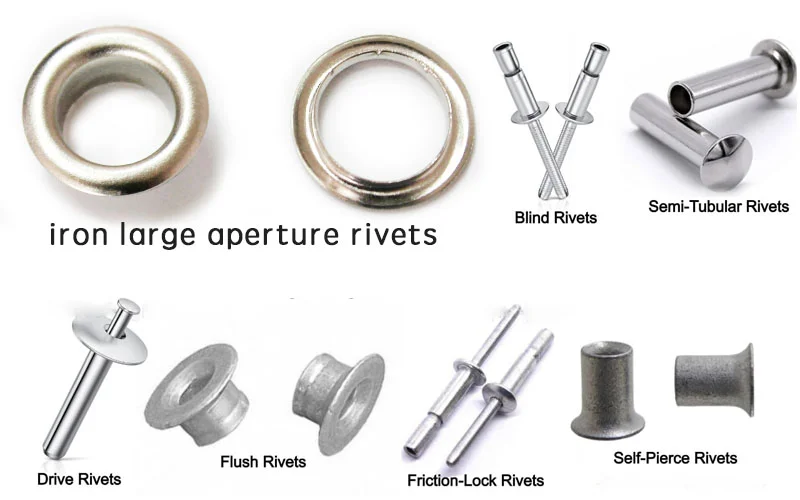
Types and Categories of Rivets
First understanding rivets, and How to Put Rivets in Fabric is a good start.
Understanding the different types of rivets is crucial for selecting the right one for your project. Here are some common categories:
Tubular Rivets
Tubular rivets are hollow and are often used in applications requiring a smooth finish on both sides of the fabric. They are ideal for lightweight materials and come in various sizes.
Blind Rivets
Also known as pop rivets, blind rivets are designed for situations where only one side of the material is accessible. They expand and secure the fabric as the mandrel is pulled through.
Split Rivets
Split rivets have a split shaft that flares out when installed, providing a stronghold. They are suitable for thicker fabrics and applications requiring extra durability.
Drive Rivets
Drive rivets are hammered into place, creating a secure bond without the need for special tools. They are commonly used in applications where speed and efficiency are important.
Decorative Rivets
Decorative rivets add an aesthetic element to fabric projects. They come in various shapes, sizes, and finishes, making them perfect for fashion and design applications.
What is an Automatic Rivet Machine?
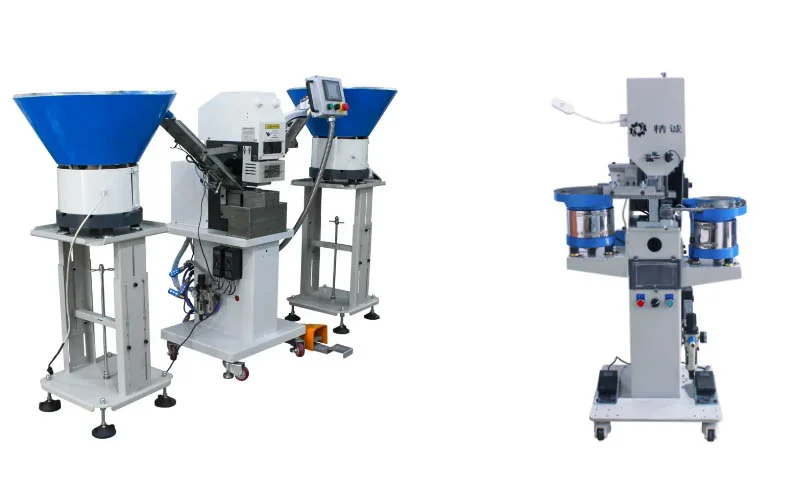
An automatic rivet machine is a specialized piece of equipment designed to streamline the process of installing rivets into various materials, such as fabric, metal, or plastic. These machines automate the riveting process, making it faster, more precise, and less labor-intensive compared to manual riveting methods.
How to Put Rivets in Fabric, Fully Automatic Machine is the Best Form.
Key Features of Automatic Rivet Machines
1. Automation
Automatic rivet machines use computerized controls to perform riveting operations with minimal human intervention. This automation ensures consistent quality and reduces the likelihood of errors.
2. Speed and Efficiency
These machines can install rivets at a much faster rate than manual methods, significantly increasing production speed and efficiency. This is particularly beneficial in high-volume manufacturing environments.
3. Precision
Automatic rivet machines provide precise control over rivet placement and pressure, ensuring each rivet is installed correctly. This precision is crucial for maintaining the structural integrity and aesthetic quality of the finished product.
4. Versatility
Modern automatic rivet machines are designed to handle a variety of rivet sizes and types, making them suitable for a wide range of applications across different industries.
5. Safety Features
To protect operators, automatic rivet machines are equipped with safety mechanisms such as guards and emergency stop buttons, reducing the risk of accidents.
How to Put Rivets in Fabric:Types of Automatic Rivet Machines
Pneumatic Rivet Machines
These machines use compressed air to drive the rivets. They are known for their speed and power, making them ideal for heavy-duty applications.
Electric Rivet Machines
Electric rivet machines use electric motors to drive the rivets. They are quieter and more energy-efficient compared to pneumatic and hydraulic systems.
Install rivets in thick fabrics like leather and denim.
Step-by-Step Guide to Installing Rivets
1. Choose the Right Rivets and Machine
- Rivet Type and Size: Ensure the rivets are designed for thick materials like leather and denim. They should be long enough to pass through the fabric and secure properly.
- Automatic Rivet Machine: Select a machine that is capable of handling the thickness of your material. It should have adjustable settings to accommodate various fabric types.
2. Prepare the Fabric
- Mark the Placement: Use a measuring tape to evenly space out where the rivets will go. Mark these spots with a marker or chalk.
- Pre-Punch Holes: Place the fabric on a cutting mat and use a punch tool to create holes at the marked spots. Ensure the holes are clean and not frayed.
3. Set Up the Automatic Rivet Machine
- Adjust Settings: Configure the machine according to the thickness of your fabric and the size of the rivets. Follow the manufacturer’s instructions for precise settings.
- Load Rivets: Fill the machine’s hopper with the appropriate rivets. Ensure they are properly loaded and ready for installation.
4. Position the Fabric
- Align the Fabric: Place the fabric under the machine’s punching head, aligning the pre-punched holes with the machine’s riveting position.
- Secure in Place: Some machines may have clamps or guides to hold the fabric in place during the riveting process.
5. Install the Rivets
- Activate the Machine: Once everything is aligned, activate the machine. It will automatically place the rivet through the fabric and secure it in place.
- Check the Rivet: Ensure the rivet is securely fastened and properly aligned. Adjust settings if necessary for better results.
Machine and Materials Applicable Needed
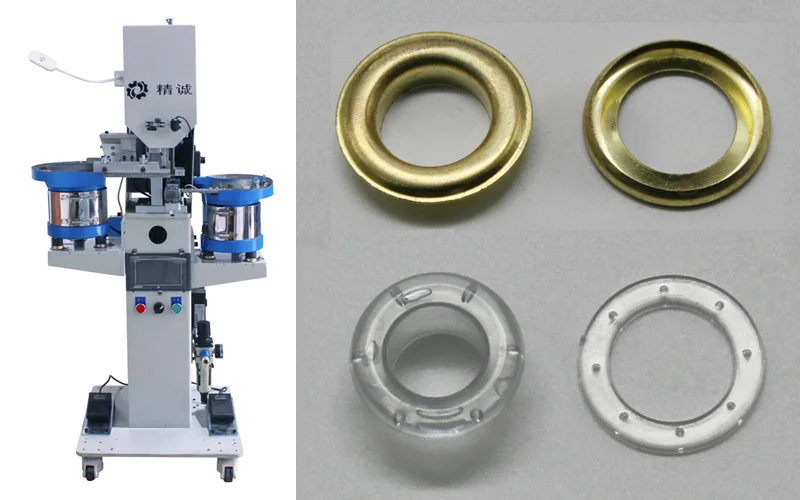
Machine Setup:
Turn on the machine and perform any necessary warm-up or initialization procedures.
Adjust machine settings according to the operation manual, including parameters such as rivet size, feed rate, and riveting pressure.
Loading Rivets:
Load the rivets into the machine’s feed system or hopper.
Ensure the rivets are properly aligned and that the feed system is functioning correctly.
Positioning the Workpiece:
Place the workpiece securely in the machine’s work area, aligning it with the riveting tool.
Use clamps or fixtures if necessary to hold the workpiece in place.
Adjusting the Machine:
Make any final adjustments to the machine settings based on the specific requirements of the task.
Check that the rivet placement and alignment are correct.
Riveting Process:
Start the machine and monitor the riveting process.
Ensure the machine is operating smoothly and that rivets are being applied correctly.
If necessary, adjust the feed rate or pressure during the process.
FAQs
How do I maintain and care for rivets in fabric?
Installation: Set rivets properly without over-tightening.
Inspection: Regularly check for wear and tighten loose rivets promptly.
Cleaning: Use mild detergent and water, and dry thoroughly.
Handling: Be gentle to avoid stressing rivets or fabric.
Repair: Replace damaged rivets or reinforce fabric as needed.
Can rivets be reused?
Generally, No
Rivets are designed for single use. Removing them usually damages the rivet.
Consider Replacements
Replace old or damaged rivets instead of reusing them.
How do I remove a rivet from fabric?
Safe Removal Techniques
Use a drill to carefully remove the rivet head.
Use pliers to pull out the remaining parts.
Tools Needed
Drill, pliers, and safety equipment (gloves and goggles).
What are some advanced techniques for using rivets in fabric?
Conclusion
In conclusion, utilizing an automatic rivet machine for installing rivets in fabric offers unparalleled efficiency and precision. This technology not only streamlines the process but also ensures consistent results, making it ideal for both small-scale projects and large-scale production environments. By following the steps outlined in this guide and leveraging the capabilities of an automatic rivet machine, you can enhance the durability and aesthetic appeal of your fabric projects. Whether you’re working with delicate fabrics or robust materials like leather and denim, investing in the right automatic rivet machine will undoubtedly elevate your craftsmanship and productivity.

